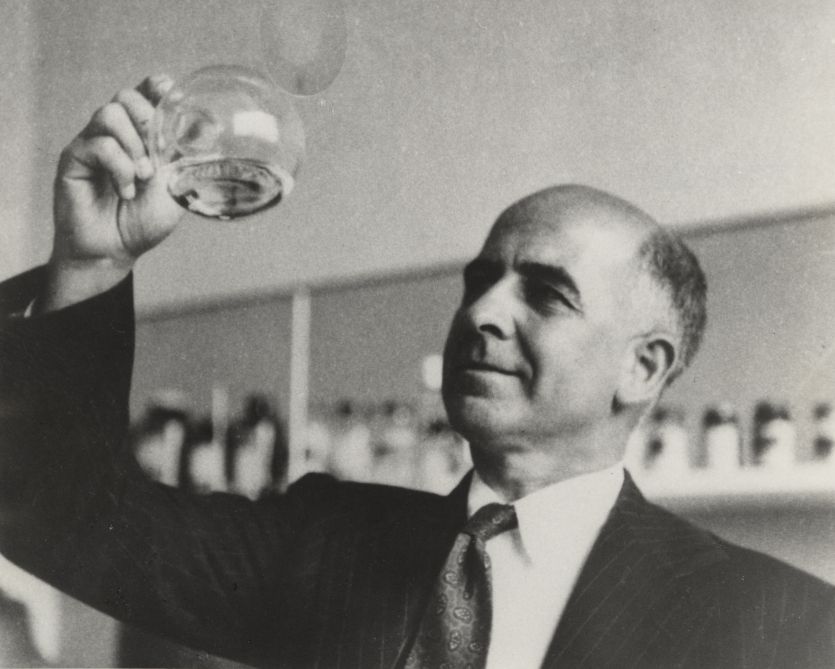The Whippet #147: How's my perceiving?
On this page

Good morning! Now this!
Why Write? is a neat new podcast – each ep is 10 minutes, 1 writer, 1 question: why do you write?
I went into something of an existential tailspin when Noè Harsel approached me to do the podcast because the question had honestly never occurred to me. Apparently I'm not the only guest to have had that reaction. Noè just going around sowing chaos in the Australian arts community.
Anyway, listen here if you like!

Somewhat shorter issue this time, either because I couldn't find enough good things or I was in a weird mood and couldn't perceive the good things accurately, impossible to know which. The dangers of an emotion-based curation system!
But if you want to test it out, one of the things I was going to share was this subreddit, r/cutawayporn, which has those diagrams of Viking longhouses and so on with the roofs and sides cut off so you can see inside. I love those. But the subreddit hasn't been updated in two years, and I feel like the backlog doesn't live up to the promise of the premise. Bored persons can check it out and determine whether it should have made the cut.

Kowloon Walled City is a highlight though:


Smelling salts work and are used by pro footballers
Sorry if you already know this, but I assumed a) smelling salts were just an intense, sharp essential oil or perfume, something like eucalyptus oil b) that they didn't do much beyond placebo, since they were mainly used to rouse women who had pretended to faint at a shocking piece of news and c) that they were no longer made or used.
Aside about Georgian/Regency/Victorian-era fainting
There's a few theories around women fainting all the time in literature – that it was their tight corsets (which I don't buy because Regency-era [Jane Austen times] women also fainted a lot, and they wore quite loose dresses as a reaction against the previous era's corsets), or all the arsenic in the the green wallpaper and green dresses (then why didn't men faint just as much?) but I think it was just social convention. But not faked, exactly.
People now will gasp in surprise, or put a hand up to their mouth, and these are clearly voluntary actions, they're not, like, spasms – but they're not fake either, they're a trained, automated social expression. Similarly there's involuntary laughter, and fake, forced laughter, but there's also a kind of conversational laugh that's neither involuntary nor fake – it's an unplanned sincere expression of appreciation. I think swooning in shock was the same.
Back to smelling salts
Smelling salts produce ammonia gas, which is very toxic in large quantities, but fine in smelling salts amounts. It irritates your nasal lining, forcing you to take a deep, sharp, involuntary breath, increases the circulation in your head, and makes you release a little jolt of adrenaline. These things together can bring a person out of light unconsciousness.
(They do also typically contain perfume, but it's not the active ingredient – it's to cover the terrible, terrible smell of the ammonia.)
Ice hockey player Ryan Carter: “All I know, if needles had a smell, that’s what they’d smell like.”
Smelling salts are banned in boxing in most countries, because boxers (or rather their cornermen) would use them to bring a concussed boxer round long enough to finish the fight. I think we can all agree that it is bad for your brain health to continue a boxing match post-consciousness.
They're also risky to give to an injured person because they make you jerk your head back sharply when you smell them, which is not great if you've just had a head injury, or like, whiplash.
NFL players use them when they have not been knocked out, just to sort of give them pep mid-game, but there may not be a tonne of point to it – if you're fully awake, you can achieve the smelling salts effect just by taking some short sharp breaths yourself, Wim Hof style. Here is a picture of famous quarterback Peyton Manning sniffing smelling salts and looking like he hates it.
[Source: Sports Illustrated, which has to be a first for The Whippet]
Fluorite crystals with Sphalerite from Denton, Sub-Rosiclare Level, Harris Creek, Hardin Co., Illinois
— Geology Tweets (@GeologyTime) June 27, 2021
Photo: Mardani Fine Minerals#minerals pic.twitter.com/lP6EvvPD5C
Cornermen and cutmen and styptic pencils
Cornermen are the guys (now presumably women as well, I don't keep up with boxing news) who do the towelling and peptalk and stuff between rounds. A variety of cornerman was a cutman – their job is to stop any cuts from bleeding, because if you started bleeding too heavily, you were out of the fight, and all the mobsters who put money on you would lose it. [Wikipedia page on cutmen]
Cutmen used astringents like epinephrine (adrenaline), chitosan (ground up shellfish) and styptic pencils (aluminium oxide) to seal wounds. It's fascinating to see medicines developed for arguably not a great cause (allowing people to be punched in the head way past the point of safety).
You can just buy styptic pencils to carry around in your handbag, and I love the idea of being a person who always has a styptic pencil on hand. I could be a rom-com character whose uncle is a famous cutman (retired) who dispenses wise, boxing-inflected relationship advice.
Unfortunately(?) IRL I very rarely cut myself deeply enough to have actual flowing blood that needs to be stopped – let alone while I'm out of the house and need to look presentable – so I can't really justify buying a styptic pencil. This product is for people who chop carrots on the way to a job interview I guess.
(Update: it's for people who cut themselves shaving.)
The grave of artist Patrick Caulfield (designed by artist Patrick Caulfield)

Artist Patrick Caulfield is an English artist (Patrick Caulfield) buried in Highgate Cemetery in London. His style is kind of pop-art-y ("known for his bold canvases", The Tate says) and you can look at some of his paintings here.
(For those reading Dracula Daily along with me, I regret to inform you that Highgate Cemetery is not the cemetery featured in Dracula, Bram Stoker's novelisation of Bram Stoker's Dracula.)
High-octane contraceptives


Russell Earl Marker is famous for two things:
- He devised the "octane rating", which is a measure of a fuel's ability to resist 'engine knock' or "a fuel's ability to withstand compression in an internal combustion engine without detonating". I don't care enough to find out what that means but you can read the wikipedia entry if you like.
Interestingly, high-octane fuel isn't necessarily better for cars than low-octane fuel, they're just appropriate for different types of engines. But petrol companies started bragging about their high-octane fuel, so here we are. - He rigorously researched a tonne of plants to find an artificial source of progesterone, eventually finding it in a species of wild yam in Mexico. The progestin he synthesised from this yam was used in the first ever hormonal contraceptives (as well as leading to treatment for urinary conditions, pre-menstrual dysphoria disorder, polycystic ovarian syndrome (PCOS), relief of menopause symptoms, gender-affirming meds, treatment for enlarged prostate, and a bunch of other useful stuff).
Marker's company also synthesised artificial cortisone from the same yam (a steroidal anti-inflammatory).
This guy! What a hero!
My favourite part is that after these achievements, he quit to follow his true passion: collecting antique silver and making reproductions of 18th-century silver objects.
I collect stories of late-in-life career changes, because they remind me that you don't just get stuck doing whatever you were doing at age 35, like you were making a face and the wind changed, except the face was your whole life.
Share any you know with me!

Comments
Sign in or become a Whippet subscriber (free or paid) to add your thoughts.
Just enter your email below to get a log in link.
A newsletter for the terminally curious
Arrives in your inbox every second Thursday.
